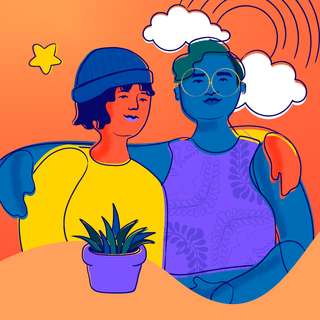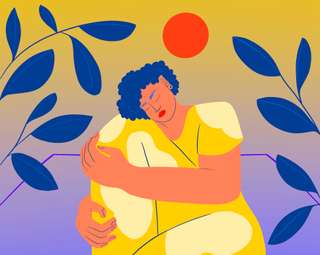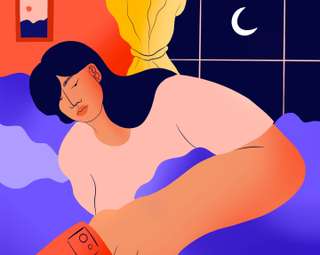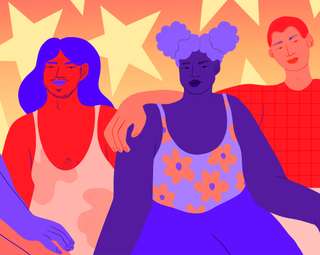Introduction
The 2024 México National Survey on the Mental Health of LGBTQ+ Young People is a pioneering initiative led by The Trevor Project in collaboration with academic researchers from Universidad Nacional Autónoma de México (UNAM) and partner organizations Yaaj Transformando tu Vida A.C. (Yaaj México), Asociación por las Infancias Transgénero A.C. (Infancias Trans).
This effort reveals, for the first time in México, a detailed analysis of the mental health outcomes of LGBTQ+ young people as well as the risk and protective factors associated with their well-being. The data reveal an alarming truth: more than 50% of LGBTQ+ young people in México reported considering suicide in the past year. This painful reality disproportionately affects trans and nonbinary people, with two out of three reporting experiencing these thoughts. Most of those facing these battles are young people between the ages of 13 and 17, a crucial stage of life marked by the search for identity and acceptance.
The Trevor Project
In Collaboration With
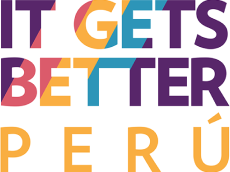
Research Partner Name
Lorem ipsum dolor sit amet, consectetur adipiscing elit, sed do eiusmod tempor incididunt ut labore et dolore magna aliqua. Sagittis purus sit amet volutpat consequat. Nulla facilisi nullam vehicula ipsum a. Vitae congue mauris rhoncus aenean.
Visit Website
Research Partner Name
Lorem ipsum dolor sit amet, consectetur adipiscing elit, sed do eiusmod tempor incididunt ut labore et dolore magna aliqua. Sagittis purus sit amet volutpat consequat. Nulla facilisi nullam vehicula ipsum a. Vitae congue mauris rhoncus aenean. Lorem ipsum dolor sit amet, consectetur adipiscing elit.
Visit Website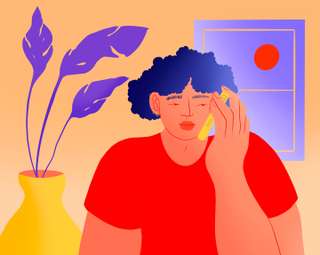
Research Partner Name
Lorem ipsum dolor sit amet, consectetur adipiscing elit, sed do eiusmod tempor incididunt ut labore et dolore magna aliqua. Sagittis purus sit amet volutpat consequat. Nulla facilisi nullam vehicula ipsum a. Vitae congue mauris rhoncus aenean.
Visit Website
Glossary
Key Findings (Spanish)
45% of LGBTQ youth seriously considered attempting suicide in the past year.
Nearly 1 in 5 transgender and nonbinary youth attempted suicide and LGBTQ youth of color reported higher rates than their white peers.
LGBTQ youth who felt high social support from their family reported attempting suicide at less than half the rate of those who felt low or moderate social support.
Fewer than 1 in 3 transgender and nonbinary youth found their home to be gender-affirming.
LGBTQ youth who found their school to be LGBTQ-affirming reported lower rates of attempting suicide.
60% of LGBTQ youth who wanted mental health care in the past year were not able to get it.
LGBTQ youth who live in a community that is accepting of LGBTQ people reported significantly lower rates of attempting suicide than those who do not.
Mental Health & Suicide Risk:
Suicide Risk
45% of LGBTQ youth seriously considered suicide in the past year
including more than half of transgender and nonbinary youth and 1 in 3 cisgender youth.
14% of LGBTQ youth attempted suicide in the past year
including nearly 1 in 5 transgender and nonbinary youth and 1 in 10 cisgender youth.
Rates of considered and attempted suicide among LGBTQ youth
Explore Data by:
-
Ages 13-17
-
Ages 18-24
-
Gay
-
Lesbian
-
Bisexual
-
Pansexual
-
Queer
-
Questioning
-
Asexual
-
Cisgender boy/
man -
Cisgender girl/
woman -
Transgender boy/
man -
Transgender girl/
woman -
Nonbinary/
genderqueer -
Questioning
-
Asian American/
Pacific Islander -
Black
-
Latinx
-
Middle Eastern/
Northern African -
Native/
Indigenous -
White
-
More than one race/
ethnicity
12% of white youth attempted suicide in the past year
compared to…
-
21%
of Native/
Indigenous youth -
20%
of Middle Eastern/
Northern African youth - 19% of Black youth
- 17% of Multiracial youth
- 16% of Latinx youth
-
12%
of Asian American/
Pacific Islander youth
Although our data continue to show high rates of mental health and suicide risk among LGBTQ young people, it is crucial to note that these rates vary widely based on the way LGBTQ youth are treated.
Dr. Myeshia Price (she/her or they/them)
Senior Research Scientist, The Trevor Project
Anxiety & Depression
73% of LGBTQ youth reported experiencing symptoms of anxiety
including more than three-quarters of transgender and nonbinary youth and nearly two-thirds of cisgender youth.
58% of LGBTQ youth reported experiencing symptoms of depression
including nearly two-thirds of transgender and nonbinary youth and nearly half of cisgender youth.
Anxiety & depression symptoms reported among LGBTQ youth
Explore Data by:
-
Ages 13-17
-
Ages 18-24
-
Gay
-
Lesbian
-
Bisexual
-
Pansexual
-
Queer
-
Questioning
-
Asexual
-
Cisgender boy/
man -
Cisgender girl/
woman -
Transgender boy/
man -
Transgender girl/
woman -
Nonbinary/
genderqueer -
Questioning
-
Asian American/
Pacific Islander -
Black
-
Latinx
-
Middle Eastern/
Northern African -
Native/
Indigenous -
White
-
More than one race/
ethnicity
Trends in LGBTQ youth mental health & suicide risk from 2020 to 2022
-
Symptoms of anxiety
-
Symptoms of depression
-
Considered suicide
-
Attempted suicide
Mental Health Care:
Access to Care
Among all LGBTQ youth, 82% wanted mental health care and 18% did not.
60% of LGBTQ youth who wanted mental health care in the past year were not able to get it
including nearly 3 in 5 transgender and nonbinary youth and more than 3 in 5 cisgender youth.
Desire for and access to mental health care
Desire for mental health care
-
82% Wanted care
-
18% Didn’t want care
Access to mental health care
-
60% Wanted but did not receive care
-
40% Wanted and received care
LGBTQ youth who wanted mental health care but were unable to get it cited the following top ten reasons
-
Fear of discussing mental health concerns
-
Concerns with obtaining parent/caregiver permission
-
Fear of not being taken seriously
-
Lack of affordability
-
Fear of care not working
-
Fear of being outed
-
Fear of my identity being misunderstood
-
Concerns with receiving virtual care at home
-
Lack of transportation options
-
Lack of parent/caregiver permission
LGBTQ youth who did not feel care providers would understand their culture by race/ethnicity
-
Asian American/Pacific Islander
-
Black
-
Latinx
-
Middle Eastern/Northern African
-
Native/Indigenous
-
White
-
More than one race/ethnicity
Impact of Current Events:
COVID-19
56% of LGBTQ youth reported that their mental health was poor most of the time or always due to the COVID-19 pandemic
including more than 3 in 5 transgender and nonbinary youth and nearly half of cisgender youth.
LGBTQ youth who reported that their mental health was “poor” most of the time or always due to the COVID-19 pandemic
-
Ages 13 to 17
-
Ages 18 to 24
LGBTQ youth who reported a close family member or friend died due to COVID-19 by race/ethnicity
-
Asian American/Pacific Islander
-
Black
-
Latinx
-
Middle Eastern/Northern African
-
Native/Indigenous
-
White
-
More than one race/ethnicity
Anti-Transgender Legislation
93% of transgender and nonbinary youth said that they have worried about transgender people being denied access to gender-affirming medical care due to state or local laws.
91% of transgender and nonbinary youth said that they have worried about transgender people being denied access to the bathroom due to state or local laws.
83% of transgender and nonbinary youth said that they have worried about transgender people being denied the ability to play sports due to state or local laws.
Recent political attacks aimed at transgender and nonbinary youth have not only threatened their access to health care, support systems, and affirming spaces at school, they’ve also negatively impacted their mental health.
Dr. Jonah DeChants (he/him)
Research Scientist, The Trevor Project
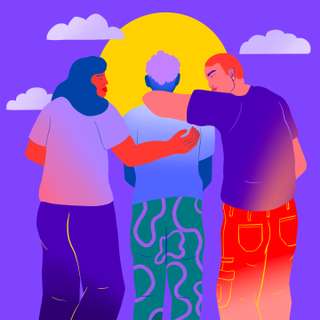
Unique Challenges
LGBTQ youth who experienced anti-LGBTQ victimization — including being physically threatened or harmed, discriminated against, or subjected to conversion therapy — reported more than twice the rate of attempting suicide in the past year compared to those who did not have any of these anti-LGBTQ experiences.
Unique Challenges:
Physical Harm
36% of LGBTQ youth reported that they have been physically threatened or harmed due to either their sexual orientation or gender identity.
31% of LGBTQ youth reported that they have been physically threatened or harmed due to their sexual orientation.
37% of transgender and nonbinary youth reported that they have been physically threatened or harmed due to their gender identity.
We must recognize that LGBTQ young people face stressors simply for being who they are that their peers never have to worry about.
Amit Paley (he/him)
CEO & Executive Director, The Trevor Project
Rates of LGBTQ youth who have been physically threatened or harmed
-
Gay
-
Lesbian
-
Bisexual
-
Pansexual
-
Queer
-
Questioning
-
Asexual
-
Transgender boy/man
-
Transgender girl/woman
-
Nonbinary/genderqueer
Rates of LGBTQ youth who have been physically threatened or harmed by race/ethnicity
-
Asian American/
Pacific Islander -
Black
-
Latinx
-
Middle Eastern/
Northern African -
Native/
Indigenous -
White
-
More than one race/
ethnicity
LGBTQ youth who attempted suicide in the past year, comparison across those who have ever been physically threatened or harmed due to either their sexual orientation or gender identity
-
Experienced threat or harm based on sexual orientation or gender identity
-
Did not experience threat or harm based on sexual orientation or gender identity
Discrimination
73% of LGBTQ youth reported that they have experienced discrimination based on their sexual orientation or gender identity at least once in their lifetime.
65% of LGBTQ youth reported that they have experienced discrimination based on their sexual orientation.
71% of transgender and nonbinary youth reported that they have experienced discrimination based on their gender identity.
Rates of LGBTQ youth who have experienced discrimination
-
Gay
-
Lesbian
-
Bisexual
-
Pansexual
-
Queer
-
Questioning
-
Asexual
-
Transgender boy/man
-
Transgender girl/woman
-
Nonbinary/genderqueer
Rates of LGBTQ youth who have experienced discrimination by race/ethnicity
-
Asian American/
Pacific Islander -
Black
-
Latinx
-
Middle Eastern/
Northern African -
Native/
Indigenous -
White
-
More than one race/
ethnicity
LGBTQ youth who attempted suicide in the past year, comparison across those who have ever experienced discrimination
-
Experienced discrimination based on sexual orientation or gender identity
-
Did not experience discrimination based on sexual orientation or gender identity
Conversion Therapy
LGBTQ youth who reported being threatened with or subjected to conversion therapy
-
83% Not subjected to or threatened with conversion therapy
-
11% Threatened with conversion therapy
-
6% Subjected to conversion therapy
17% of LGBTQ youth reported being threatened with or subjected to conversion therapy
including more than 1 in 5 transgender and nonbinary youth and more than 1 in 10 cisgender youth.
Conversion therapy has been consistently associated with negative mental health outcomes and greater risk for suicide. That’s why this so-called ‘therapy’ is widely opposed by all major medical and mental organizations, and why it is a major focus of The Trevor Project’s advocacy work.
Amit Paley (he/him)
CEO & Executive Director, The Trevor Project
LGBTQ youth who attempted suicide in the past year, comparison across those subjected to conversion therapy
-
Subjected to conversion therapy
-
Threatened with conversion therapy
-
Not subjected to or threatened with conversion therapy
Ways to Support LGBTQ Youth:
Access to Affirming Homes & Schools
LGBTQ youth who live in a community that is accepting of LGBTQ people reported significantly lower rates of attempting suicide compared to those who do not.
Nearly 2 in 5 LGBTQ youth reported living in a community that is somewhat or very unaccepting of LGBTQ people.
LGBTQ youth who identified home or school as an LGBTQ-affirming space
-
Identified home as an LGBTQ-affirming space
-
Identified school as an LGBTQ-affirming space
Transgender and nonbinary youth who identified home or school as a gender-affirming space
-
Identified home as a gender-affirming space
-
Identified school as a gender-affirming space
LGBTQ youth who attempted suicide in the past year, comparison across access to LGBTQ-affirming spaces
-
Not LGBTQ-affirming
-
LGBTQ-affirming
Transgender and nonbinary youth who attempted suicide in the past year, comparison across access to gender-affirming spaces
-
Not gender-affirming
-
Gender-affirming
These findings emphasize the wide range of experiences and identities held by LGBTQ young people across the country, as well as the clear need to break down barriers to care and promote acceptance at the local level to help save young LGBTQ lives.
Dr. Myeshia Price (she/her or they/them)
Senior Research Scientist, The Trevor Project
Reports of community acceptance of LGBTQ people among LGBTQ youth
-
Very unaccepting
-
Somewhat unaccepting
-
Somewhat accepting
-
Very accepting
Suicide attempt rate by community acceptance of LGBTQ people
-
Very unaccepting
-
Somewhat unaccepting
-
Somewhat accepting
-
Very accepting
The Importance of LGBTQ Representation & Advocacy
89%
of LGBTQ youth reported that seeing LGBTQ representation in TV/
LGBTQ youth also reported feeling good about being LGBTQ when…
- 79% musicians come out as LGBTQ
- 74% other celebrities come out as LGBTQ
- 71% non-LGBTQ celebrities advocate for LGBTQ people
- 70% companies are led by LGBTQ people
- 67% athletes come out as LGBTQ
Support from Parents & Caregivers
Five most common ways that LGBTQ youth reported feeling supported by their parents or caregivers
-
Been welcoming to their LGBTQ friends or partners
-
Talked with them respectfully about their LGBTQ identity
-
Used their name and pronouns correctly
-
Supported their gender expression
-
Educated themselves about LGBTQ people and issues
The fact that very simple things — like support from family and friends, seeing LGBTQ representation in media, and having your gender expression and pronouns respected — can have such a positive impact on the mental health of an LGBTQ young person is inspiring, and it should command more attention in conversations around suicide prevention and public debates around LGBTQ inclusion.
Amit Paley (he/him)
CEO & Executive Director, The Trevor Project
Suicide attempt rate by LGBTQ youth social support
-
Low to moderate support
-
High support
LGBTQ youth reported lower rates of attempting suicide when they felt more supported by their friends and family.
Where did LGBTQ youth find moments of joy?
Although LGBTQ youth reported many serious challenges, they also described hundreds of ways in which they find joy and strength in their lives. From their favorite content and activities to seeing representation and allyship, the wide range of responses emphasizes that we can all help create safe, supportive environments where LGBTQ youth can feel happy and express themselves.
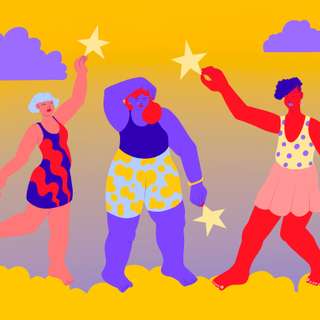
- BTS & Lil Nas X
- wearing my first binder
- Dungeons & Dragons
- seeing LGBTQ people of color represented in media
- going to drag shows
- getting to take care of house plants
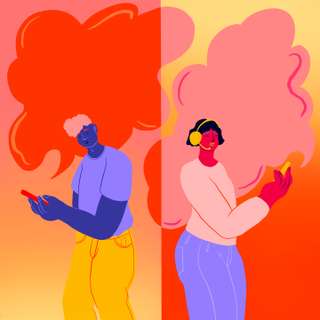
- journaling my thoughts and feelings
- watching anime
- K-Pop
- changing my name to something that fit me
- having a doctor who is an ally
- my determination
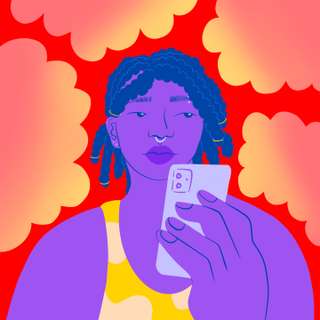
- my cat
- writing songs
- daydreaming about the future
- happy LGBTQ elders
- loving my body
- just knowing that there’s people out there like me
- Therapy & medication
- Gender-affirming clothing
- Family & parental support
- The LGBTQ community
- Accepting & affirming friends
- Hope & excitement for the future
- Happy LGBTQ elders & married couples
- Online communities & support
- Learning about LGBTQ history
- Faith & spirituality
- Music (BTS, Lil Nas X, etc)
- Partners/
falling in love - Cishet allies
- Learning I’m not alone and there are more people like me
- Protective laws/
victories for LGBTQ rights - Supportive teachers
- Having a safe space to express gender, gender identity, and sexuality
- All gender restrooms
- Queer role models
- Pets/
Animals - Taking care of younger siblings
- Art, art expression, art therapy/
crafting/ drawing - Video games/
gamer community - LGBTQ clubs on campus
- Athletics & Exercise
- Going to college
- Drag shows
- Dance
- Living as their authentic self
- Escapism/
fantasy/ fandom - Gender-affirming hormones
- Financial stability
- LGBTQ celebrities, influencers & representation in media
- Self-love & acceptance
- Cooking
Methodology
The content and methodology for The Trevor Project’s 2022 National Survey on LGBTQ Youth Mental Health were approved by an independent Institutional Review Board.
